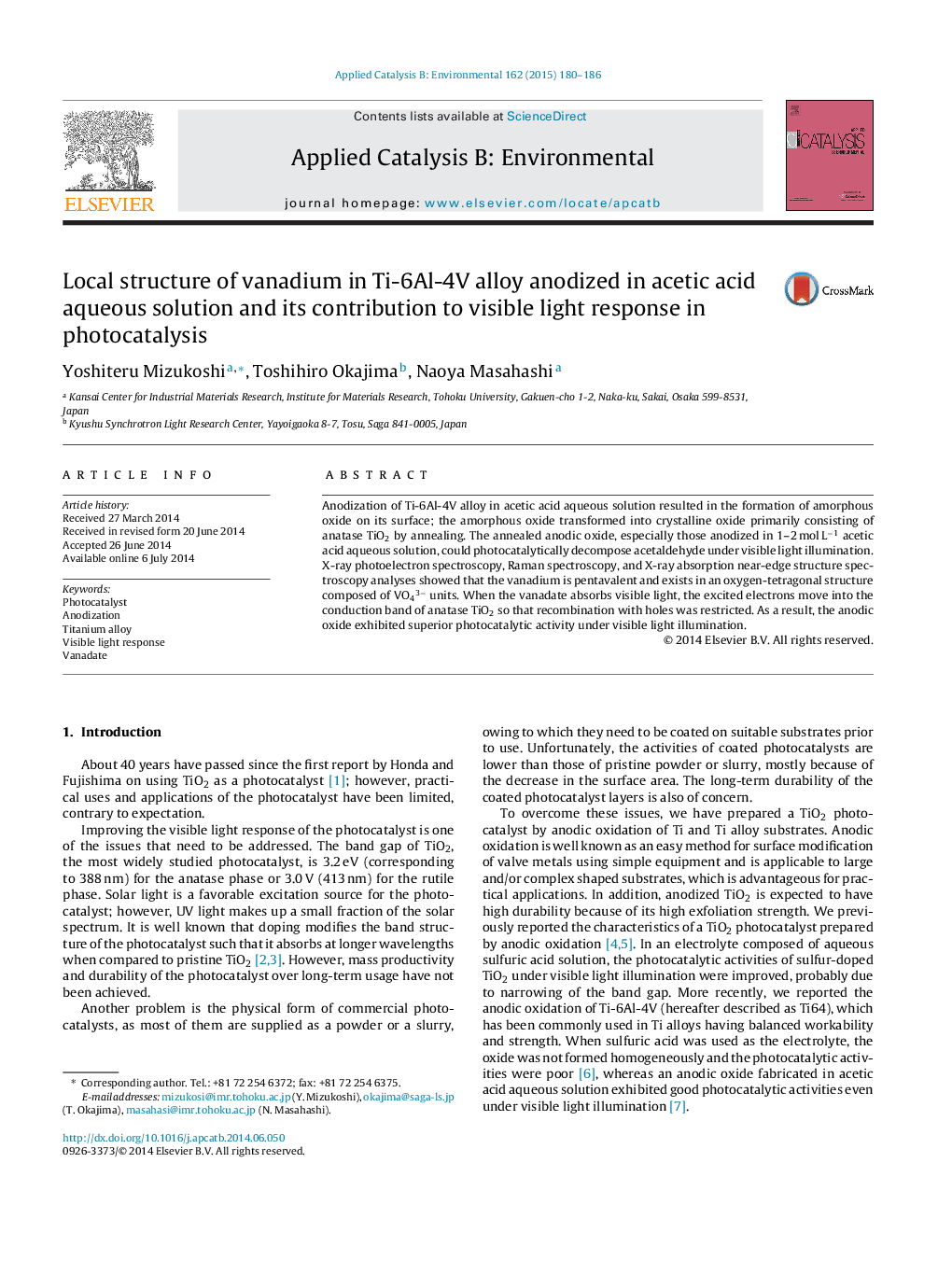| Article ID | Journal | Published Year | Pages | File Type |
|---|---|---|---|---|
| 45635 | Applied Catalysis B: Environmental | 2015 | 7 Pages |
•Anodization/annealing of Ti-6Al-4V afforded visible light responsive photocatalysts.•Vanadium was present on the oxide surface as vanadate.•Acetaldehyde could be decomposed on the oxide under visible light illumination.•Visible light absorption by the vanadate contributed to the activities.
Anodization of Ti-6Al-4V alloy in acetic acid aqueous solution resulted in the formation of amorphous oxide on its surface; the amorphous oxide transformed into crystalline oxide primarily consisting of anatase TiO2 by annealing. The annealed anodic oxide, especially those anodized in 1–2 mol L−1 acetic acid aqueous solution, could photocatalytically decompose acetaldehyde under visible light illumination. X-ray photoelectron spectroscopy, Raman spectroscopy, and X-ray absorption near-edge structure spectroscopy analyses showed that the vanadium is pentavalent and exists in an oxygen-tetragonal structure composed of VO43− units. When the vanadate absorbs visible light, the excited electrons move into the conduction band of anatase TiO2 so that recombination with holes was restricted. As a result, the anodic oxide exhibited superior photocatalytic activity under visible light illumination.
Graphical abstractFigure optionsDownload full-size imageDownload as PowerPoint slide
